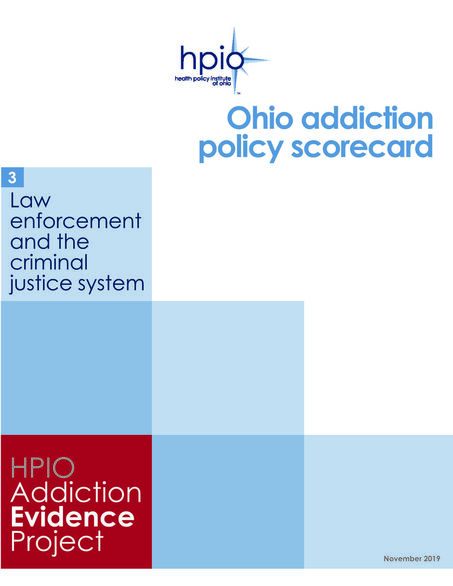Ohio addiction policy scorecard:
Law enforcement and the criminal justice system

Webinar recording
The United States incarcerates people at a higher rate than any other country in the world, and Ohio has the 15th highest incarceration rate among the 50 states. Within the incarcerated population, there are large disparities. Nationally and in Ohio, African Americans are incarcerated in state prisons at more than five times the rate of whites. Additionally, black Ohioans are arrested for drug-related crimes at 2.5 times the rate of white Ohioans, despite similar rates of illicit drug use and substance use disorder nationally.
Incarceration is costly for Ohio taxpayers. It costs more than $75 per day to house a person in state prison. Because Ohio currently incarcerates over 49,000 people in prisons statewide, taxpayers will spend over $1.3 billion dollars on state prison incarceration this year.
Addiction is a major driver of Ohio’s high incarceration rate. National “tough on crime” policies, including the War on Drugs, have created severe penalties for addiction-related behaviors and have led to an unprecedented increase in the prison population. Ohioans with prior convictions face challenges finding housing, securing employment and pursuing activities that aid in recovery from addiction.
Developing evidence-informed and innovative solutions in law enforcement agencies, courts, jails, prisons and community correctional settings can rehabilitate people with addiction and limit the number of people with addiction who enter the criminal justice system.
This report reviews state-level policy changes related to law enforcement and the criminal justice system enacted in Ohio from 2013 to 2018. It includes:
- An inventory of policy changes (legislation, rules and state agency initiatives, programs and systems changes)
- A scorecard that indicates the extent to which Ohio is implementing strategies that are proven effective by research evidence
- Opportunities for improvement in both the public and private sectors

